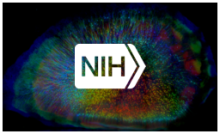
Enhancement of a new DNA-based bioimaging technique… Method allowing near-simultaneous imaging of several thousand neurons in awake behaving mice… Imaging method to overcome biological tissue refractive index inhomogeneity increases large-field-of-view imaging depth… Open-source software package for working with microscopy images boosts high-throughput, single-cell analysis …
Improved DNA conjugation method enhances the achievable labeling density and spatial accuracy of highly multiplexed Exchange-PAINT imaging
Recent developments in high-resolution fluorescence imaging methods have overcome the limits of light diffraction. However, these techniques are challenged by their limited multiplexing capability, which hinders researchers’ understanding of multi-protein interactions at the nanoscale level. Exchange-PAINT (i.e., Points Accumulation in Nanoscale Topography), a new DNA-based approach, boosts multiplexing capabilities by sequentially imaging target molecules using orthogonal, dye-labeled DNA strands. Although very promising for bioimaging, the widespread application of this approach has been limited by the availability of DNA-conjugated ligands for protein labeling. At Harvard University, Dr. Peng Yin and colleagues have developed a new labeling platform for Exchange-PAINT that efficiently conjugates DNA oligonucleotides to various labeling probes (e.g., antibodies, nanobodies, and small molecules). By designing and testing the conjugation of 52 oligonucleotides to labeling probes like nanobodies, the group successfully enhanced the achievable labeling density and spatial accuracy of Exchange-PAINT. Finally, they demonstrated high-resolution cellular imaging with their labeling platform. The DNA conjugation method is simple to perform and the group anticipates that this general framework for labeling protein targets will make Exchange-PAINT accessible to a broader scientific community.
reveal a new calcium imaging method that utilizes a two-photon light-sculpting system. They updated their previously developed methods by tailoring the microscope to view the typical size of neuronal cell bodies in the mouse cortex. These changes allowed for the samplings of larger volumes with minimal numbers of excitation voxels at near-single-cell resolution. The signal-to-noise ratio was maximized using a fiber-based laser amplifier that synchronized pulses to the imaging voxel speed. The overall approach enabled near-simultaneous calcium imaging of several thousand neurons, across cortical layers (0.5 mm × 0.5 mm × 0.5 mm) and in the hippocampus of awake behaving mice. This exciting new method presents the opportunity to test experimentally a variety of theoretical models of information processing in the mammalian neocortex.
Large-field-of-view imaging by multi-pupil adaptive optics allows position-dependent correction of biological tissue optical distortion
The refractive index inhomogeneity within biological tissue presents challenges for in vivo optical imaging. Adaptive optics (AO) has corrected some of the distortions caused by this lack of homogeneity. However, the limited field-of-view (FOV) of current methods reduces imaging speed across larger areas, since distortion varies spatially and needs to be corrected accordingly. Approaches that provide simultaneous large-FOV distortion correction, and hence enable imaging of fast dynamics, are needed. At Purdue University, Dr. Meng Cui and colleagues developed multi-pupil adaptive optics (MPAO), which enables simultaneous, position-dependent correction over a 450 × 450 μm2 FOV and expands the correction area to nine times that of previous methods. In conventional AO, the correction measured from one region is applied to the entire image, improving imaging performance within a limited FOV. In MPAO, the imaging procedure is similar to conventional systems, but independent correction for all regions is achieved. By implementing MPAO with imaging of in vivo mouse microglia dynamics, the group demonstrated improved quality compared with conventional AO. They next performed calcium imaging of neurons and astrocytes at 450 μm depth, achieving high-resolution images with full correction. Compared to typical techniques that provide imaging at 200-300 μm depths, large-FOV imaging at ~650 μm depth is possible using MPAO. Finally, with spatially independent distortion control, MPAO also enables nonplanar microscopy (i.e., brings 3D features at different depths into one imaging plane), which the group demonstrated by imaging 3D neurovasculature dynamics in anesthetized mice. This technique can aid high-spatiotemporal-resolution microscopy in various biological systems.
have developed an open-source software package for working with microscopy images called microMS. The new platform permits effortless sequential analysis, enabling each cell to be scrutinized by multiple techniques. Targets can be automatically located, filtered, and stratified before MS. Specific MS systems are implemented through a novel abstract base class and software architecture, offering impressive simplification of the connection of microMS to new instruments and facilitating more efficientsequential analysis of the same target. The group believes that the ease of extending microMS to a variety of mass spectrometers and other instruments will help advance single-cell profiling.
